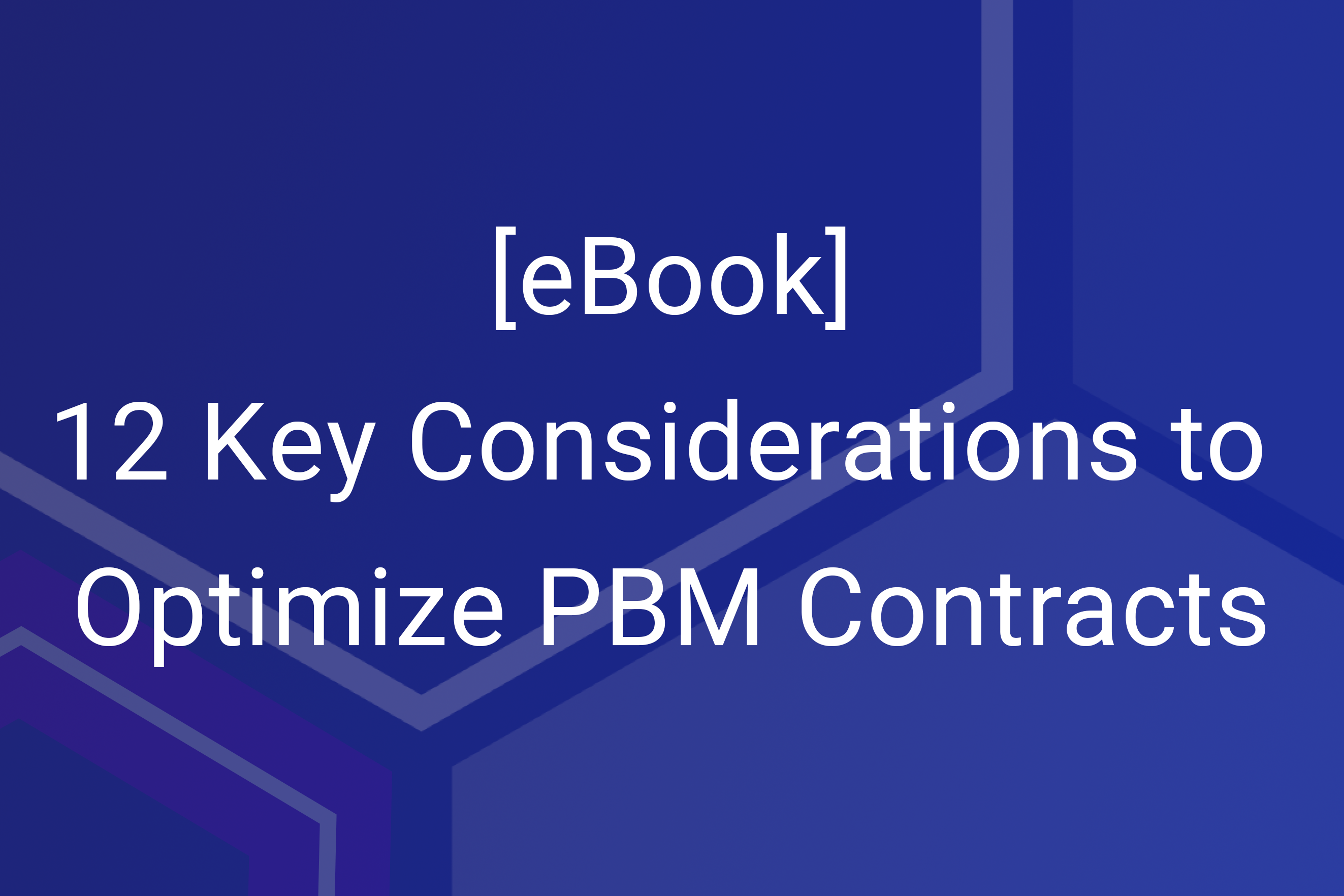An Introduction to Pharmacy Benefit Managers (PBMs)
Changes and new challenges in healthcare and pharmacy over the last several years are often keeping employers up at night. Pharmacy is costing more than it ever has and while some of this comes down to advancements in care and new drug treatments entering the market with high price tags, the broader impact of inflation is also being felt. New programs and strategies put forth by PBMs to create profits are adding to these existing challenges.
Organizations at every level are looking for relief. Specialty drugs currently account for just 2% of pharmacy claims, yet represent 55% of pharmacy spend — and an average of $84,000 annually per treatment. These skyrocketing costs have increased demands for transparency in the often complex and hard-to-navigate pharmaceutical supply chain.
PBMs exist to negotiate and, in theory, reduce drug costs. However, the nuances of this part of the supply chain can make it challenging to understand and optimize a pharmacy benefits strategy. Let’s break it down.
What is a PBM in healthcare?
PBMs are organizations that contract either with health insurance companies or directly with employers for the purpose of managing prescription drug benefits. Think of the PBM as a third-party liaison between pharmaceutical companies and health insurers or employers.
The PBM plays a somewhat controversial role in today’s U.S. healthcare industry — a segment of our economy in dire need of realignment to control exploding costs. PBMs formed, in part, to solve this need, but the issue is also partially because of the existence of PBMs, who represent an added middle layer in the process.
In the current model, the function of the PBM is to act as a go-between – seeking discounts, rebates, and other advantages in the prescription drug market on behalf of insurers, employers, and patients. As a for-profit business, the PBM must also account for its own profits in the exchange, which means that the discounts must be substantial if it is to be worth the while of both the PBMs and the employers/patients. This is sometimes possible, but it is not always the case.
What does a PBM do to reduce costs?
The role of a PBM is essentially to negotiate with drug manufacturers, wholesalers, and pharmacies for the most competitive prices for benefits plans. An employer or insurer working with a PBM is hoping to see reduced pharmacy costs negotiated into the PBM’s contract with specialty drug sellers in the pharmaceutical supply chain.
You may wonder: Why would drug manufacturers and pharmacies sell products to the PBM at reduced rates? The PBM offers manufacturers a preferred placement on their formulary drug list and offers pharmacies inclusion in the PBM’s pharmacy network. Both of these preferential placements are valuable incentives for the drug manufacturers, and can sometimes lead to more affordable patient access to those specific drugs (through the PBM).
However, a PBM’s role in price-setting in the pharmacy space has also created heightened publicity for large PBMs, specifically around rich profit margins, which come from their plan sponsor customers and the plan members. Negotiations for discounts on high-cost drugs may be contingent on the exclusion of other, lower-cost drug options from the plan. The outcome could potentially result in a net increase in employer/patient costs from which the PBM could benefit financially.
A PBM may also leverage alternative funding sources in an attempt to make pharmacy benefit plans more cost-effective, including copay assistance programs, government pharmaceutical assistance, charitable programs, or international drug sources.
An a la carte, unbundled approach to pharmacy services is also trending as a strategy for maximizing pharmacy spend (and competing against the drive for PBM profits), so PBM action is not the only way to potentially reduce costs.
What is a PBM’s connection with health insurance plans?
The relationship between the PBM and the overall health insurance benefit will be directly tied to whether the pharmacy benefit is carved in or out.
There are two strategies self-insured employers use to manage their pharmacy benefits — “carved in” (as a part of the larger medical benefit), or “carved out” (complemented by a standalone benefit managed outside of a health plan). Whether the pharmacy benefit is carved in or out will depend on the precise arrangement of the plan and the employer.
When carved in, the pharmacy plan is essentially bundled with medical benefits and will usually be run by a large health plan. Many large PBMs are owned by a well-known medical carrier. For example, United Healthcare and Optum, Aetna and CVS, or Cigna and Express Scripts.
Carving out becomes a viable method for controlling costs with a self-funded plan. A carved-out pharmacy benefit provides a certain level of customization that can potentially control and contain costs on a deeper level, although the details should be carefully compared with the expected costs of carved-in options.
Is my PBM providing the best possible market competitive pricing?
It can be overwhelming for employers to examine the many players in the drug supply chain and get a clear and accurate view of where things stand. Between physicians, direct manufacturers, wholesalers, pharmacies, health insurers, PBMs, and the many layers of health benefit plan design, the landscape is complex. At the same time, demand for expensive new specialty drugs such as GLP-1 agonists is surging, putting pressure on employers to find a solution
A neutral outside expert can be instrumental in maximizing the value of your PBM contract. A partner like Truveris brings the data-driven tools, focus, and expertise you need to carefully analyze the value of the relationship or better manage your contract throughout the pharmacy benefits lifecycle.
Preview some of what’s possible with the proactive application of expertise in pharmacy benefits procurement in these case studies.
Watch “PBM 101” For More Quick, Actionable Insights
There’s no need to feel intimidated by the surface complexity of pharmacy benefit management and its sometimes-obscure terminology. The experts at Truveris have put together PBM 101, an easy-to-digest video breakdown of everything you need to know about Pharmacy Benefit Managers, what they do, and how to determine the value you’re getting from your pharmacy benefit contract.
In this overview of the PBM ecosystem, we’ll walk you through:
- The role of the PBM in the drug supply chain
- How PBMs have changed over the last 50 years
- The typical services provided by a PBM
- How employers pay PBMs
- How PBMs make money
- The latest industry trends impacting PBMs
Access the PBM 101 video to learn more and ensure that you’re getting the most from your PBM relationship.





